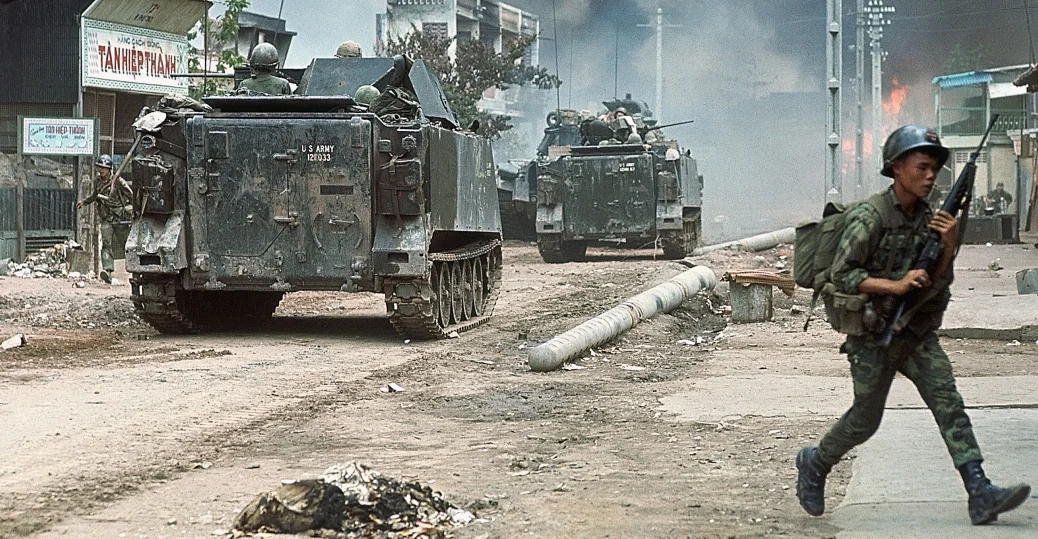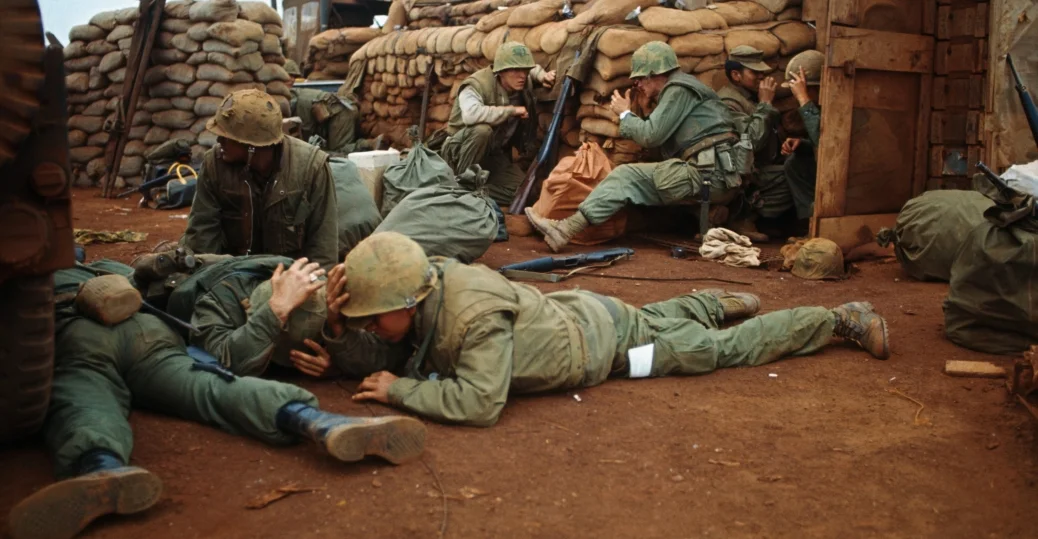Reconsideration of U.S. grand strategy is critical in the context of the ongoing war in Ukraine alongside rising tensions with China. Rebecca Lissner’s Wars of Revelation makes a compelling argument that past U.S. military interventions have played an important role in shaping U.S. grand strategy.
#Reviewing Against All Tides
The “Kitty Hawk Race Riot'” holds an important place in American naval history. An illustration of the deep and unavoidable connections between the sailors and officers of the Navy and the society they served during the Civil Rights era, it is often mentioned in passing but rarely examined in detail. Marv Truhe’s new book sets out to rectify that oversight and to help readers dive deeply into both the details of the history and the important questions it raises about the Navy of the 1970s as well as the Navy of the 21st century.
#Reviewing Rough Draft
Reviewing: Clear, Hold, and Destroy: Pacification in Phú Yên and the American War in Vietnam
The American response to the dilemma of creating a democratic society while waging a guerilla war was pacification, a European concept born out of colonization that was relatively new to Americans. In Clear, Hold, and Destroy, Army University Press historian Robert J. Thompson III closely analyzes Phu Yen, a mountainous and agricultural coastal province in Vietnam’s central highlands, to understand the gestation of American pacification, how it was implemented, and why it ultimately failed. In this study of the American commitment in Vietnam, Thompson underscores the centrality of conventional military forces in the implementation of pacification.
Balance with the Political End State: Case Studies from Korea and Vietnam
In conclusion, war is not limited nor is it total. War, and by extension, warfare, is situationally unique. Each instance is shaped through internal and external political factors, as it always has been. Understanding those factors and successfully balancing them with the appropriate means and ways to prosecute war is the defining characteristic of successful warfare.
#Reviewing In the Year of the Tiger
In the Year of the Tiger still deserves serious consideration by scholars as a worthwhile book in the growing field of academic investigation into the First Indochina War. Despite shortfalls in commission and omission at points, Waddell provides a cogent and useful analysis on which others may usefully build. That should, after all, be the goal among those who seek to understand how the First Indochina War conditioned the disaster the United States chose to pursue after final French defeat in 1954.
Political Interference, Strategic Incoherence, and Johnson’s Escalation in Vietnam
The American experience in Vietnam defined a generation, spurring civil unrest and the degradation of trust in important political and military institutions. Spanning the course of two decades, the United States’ engagement in the conflict reflected the heightened global tension of the Cold War. American involvement in Vietnam began as early as 1950, initially in the form of assistance to the French during the First Indochina War. By the end of the Kennedy administration, the United States had begun to send American advisers and military forces to Vietnam, aiming to prevent the spread of communism to Southeast Asia.
#Reviewing The Road Not Taken
Lansdale was a colorful figure, who revealed in his maverick status and his disdain for the sprawling national security apparatus. Perhaps if Lansdale had been a bit more of an adept bureaucratic knife fighter he would have been more successful. Yet, if he had, it is likely that he would never have been the agile advisor who helped Philippine President Ramon Magsaysay defeat the Hukbalahap rebellion.
#Reviewing Nine Days In May
Battles like Ia Drang, Con Tien, Khe Sanh, and Hue standout in the history of the American war in South Vietnam. While hardly typical, those clashes resonate well in popular histories and documentaries. On the other hand, transpiring on tracks of land away from large urban areas and not on some named, fortified hilltop—and at a time when multiple larger American military operations occurred across South Vietnam—nine May battles took place that lacked the consistent intensity of the aforementioned engagements, but typified the experience of many in Vietnam. Although these May battles were both remote physically and mentally for those not involved, participants experienced the savagery that came with the few, intense instances of contact with the enemy.
Prospect Theory and the Problem of Strategy: Lessons from Sicily and Dien Bien Phu
The inability or unwillingness to recognize defeat and its implications resulted in both greater material losses and amplified the strategic consequences for inevitable failures. Strategy is a human endeavor, and prospect theory offers unique insights into another dimension of the human face of war, providing a framework for examination of paradoxical decision making and human error in strategy and tactics.
Military Incidents: Not the Edge of the Abyss
Recent provocations concerning Iran and North Korea raise concerns about the U.S. fighting another war. The U.S. Navy’s history with challenging Iranian actions in the Strait of Hormuz and the perceived escalation of North Korean provocations via ballistic missile development conjure thoughts of a third world war. Yet history offers lessons on the U.S. responding to foreign aggression far away from America’s territorial borders.
#Reviewing Embers of War
To the casual student of history and foreign affairs, France’s war in Vietnam is typically a brief aside in a 50-minute lecture about America’s Vietnam War that goes something like, “You can’t truly understand America’s war in Vietnam without understanding the Franco-Indochina war,” stressing its importance, but not going much further. Indeed, this lack of coverage is reinforced by the countless books describing the American war in the 1960s. Fredrik Logevall's newest book, Embers of War: The Fall of an Empire and the Making of America’s Vietnam, analyzes the roots of America’s involvement, beginning with the French war.
A Case of Decline? Examining the US Strategic Position in the Mid-1970s
By 1974 a combination of the Watergate scandal, the Vietnam War, inflation, and slow economic growth cast serious doubts on American power. The United States faced a constitutional crisis not seen since the Civil War, and the 895 days that followed were wracked with fears of decline. As David Rothkopf noted, “While few in the street would consider or articulate questions about American decline as academics might, people knew in their gut that something was deeply wrong, that this was not the America they had been raised believing in.”
Vietnamization and the Advisory Crisis
A key element of the United States’ endgame during the Vietnam War entailed leaving the Republic of Vietnam in a position of self-reliance. Called Vietnamization, the process focused on shifting the responsibility for security squarely onto the shoulders of the South Vietnamese, permitting the return of American personnel to the U.S. What transpired in Phu Yen during 1970 proved Vietnamization impervious to indicators of an unready South Vietnamese state. Largely forgotten since the Vietnam War, the Advisory Crisis, as it became known, damaged the partnership between American and South Vietnamese forces.
Tet à Tête: Vietnamese Exploitation of American Misapprehension
The Tet Offensive was a shock and a surprise for the Americans, where despite the high death toll the Americans inflicted on the Vietnamese, the Americans still lost. The Americans did not understand the restrictions and limitations they placed on themselves: the ideology of anti-Communism and exceptionalist pro-Democracy. But the Vietnamese did.
Lessons Not Learned: Viet Cong Infrastructure and the War in South Vietnam
Defeating the enemy’s ability to organize and operate is fundamental to pacification. During the War on Terror and the Vietnam War, complex enemy organizations posed a serious challenge to the United States. Highlighting difficulties in pacification for both the Republic of Vietnam and the United States during the Vietnam War in Southeast Asia serves as a lesson underscoring the limits of American power to defeat clandestine networks.
Snatching Defeat from the Jaws of Victory
Since World War I, powerful nations victorious on the field of battle struggled to achieve political objectives because their post war settlements set conditions that facilitated future conflicts instead of ensuring lasting peace. The victorious strategist must not only ensure their pre-war political objectives are codified in the post war settlement, but the emissaries must also take great care and vigilance to end the war with strategic foresight that translates the military victory into lasting peace.
Geronimo: Strategy Lessons from History’s Periphery
On the surface, 4 December 1966, appears inconsequential. In the context of the 1960s, a decade rife with major milestones for humanity, 4 December 1966, exists on history’s periphery. Yet upon closer examination, this date is representative of what was until recently America’s longest war. Small events shape history, yet do so subtly. In that vein, Operation Geronimo revealed both the effectiveness and limitations of combating low intensity warfare with highly mobile forces. Deeper still, Operation Geronimo demonstrated that operational successes were not trustworthy indicators of progress towards victory during the Vietnam War.
#Reviewing JFK and LBJ: The Last Two Great Presidents
Hodgson fails to satisfactorily qualify JFK and LBJ as the titular “Last Two Great Presidents.” He does, however, succeed in building up Johnson’s reputation, one that is often denigrated for his part in escalating U.S. participation in Vietnam. Because of Hodgson’s account, we might consider reversing Reston’s characterization of the two: perhaps it was Johnson and his social reform success who made men think while Kennedy and his foreign policy dominance made men like Khrushchev act.
The Battle of Cung Son
Bloodying the enemy at Cung Son occurred at the cost of advancing pacification. Instead of focusing resources on intensifying the Saigon government’s control in Son Hoa District, efforts were directed towards rebuilding the hamlets and the people’s trust in the GVN to protect them. For the aforementioned reasons, what transpired at Cung Son functions as lesson that battlefield triumphs do not always equate to winning a war.





















